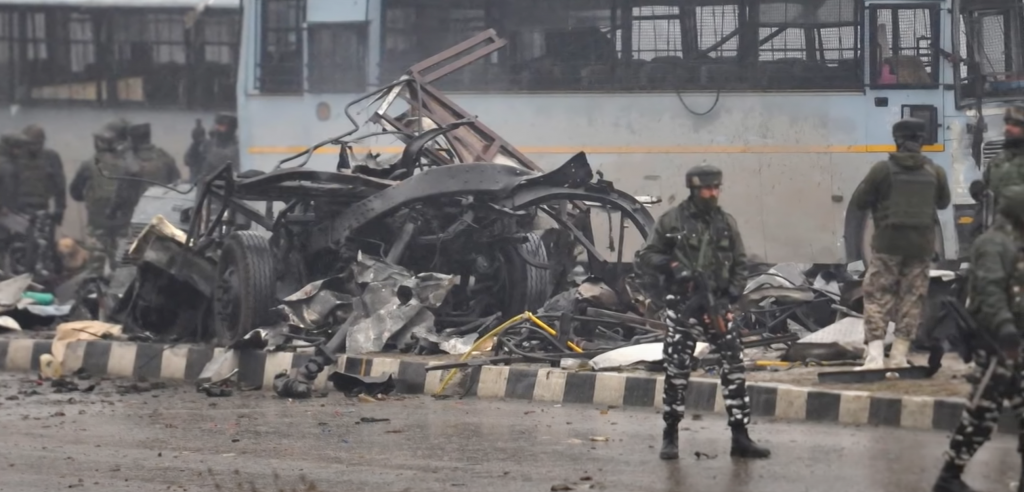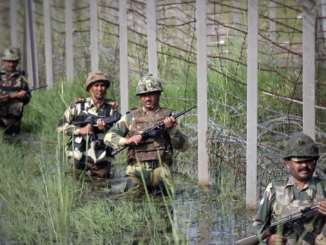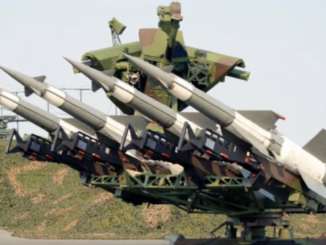
The last two years have been instrumental for the Indian Armed Forces as the country found itself embroiled in two of the most significant clashes with its arch-rivals, Pakistan and China. The India-Pakistan Pulwama crisis of 2019 and the India-China Galwan Valley standoff of 2020 were an eye opener for Indian Air Force (IAF) especially as they realized their shortcomings not just vis-a-vis a much more superior adversary China, but also Pakistan against which it enjoys clear numerical strength. Pakistan Air Force (PAF) was able to outgun the most sophisticated Indian fighter jets and weapon systems which made IAF revisit its battlefield capabilities and preparedness.
IAF, post-Pulwama and Galwan skirmishes, expedited its modernization and induction spree in order to strengthen its offensive capabilities against Pakistan and China. According to Indian Chief of Air Staff Air Chief Marshal RKS Bhadauria, during a recent address to United Services Institute of India (USI) ‘India now has an “edge” in its ability on both the Western and Northern fronts to react fast, respond fast and hit fast.’
The IAF has a sanctioned strength of 42 squadrons. However, it operates 31/32 squadrons with the number diminishing each year as more and more aircrafts reach their retirement age. Back in 2015, then-Indian Air Chief, Air Chief Marshal Arup Raha said that by 2027, IAF would build its combat fleet to 42 squadrons from the existing strength of 31/32. However, predictions suggested that IAF was unlikely to get the designated strength of 42 by 2035. Nevertheless, post-Pulwama, the Air Force realized that air superiority would be critical in any potential escalations with its rivals. Hence, it expedited its procurements and upgradation process to meet the desired squadron strength. With deals worth INR 38,900 crore, in July 2020, the Defence Acquisition Council (DAC) sanctioned procurement of 21 MiG-29 fighter jets from Russia, alongside an upgrade of the existing 59. Besides that, 12 Su-30 MKI aircraft were also to be procured from Hindustan Aeronautics Limited (HAL). Other approved acquisitions to serve the Air Force included 250 Astra missiles which also happen to be India’s first indigenous beyond-visual-range (BVR) air-to-air missiles, developed by the Defence Research and Development Organisation (DRDO).
IAF has inducted multiple front line platforms including fighter jets like the state-of-the-art Rafale jets, missiles, smart air-to-ground weapons, and helicopters like the Apache attack helicopters. IAF plans to induct a total of 450 fighter aircrafts to deploy on its western and northern frontiers against Pakistan and China in the next 35 years. The list includes 36 Rafales, 114 multirole fighter aircrafts, 100 Advanced Medium Combat Aircraft (AMCA) and over 200 Light Combat Aircraft of different variant, as reported by news agency ANI. In the basic trainer aircraft category, it also plans to induct 370 Hindustan Turbo Trainer-40 from the state-owned aerospace and defence company HAL.
In the same address to USI mentioned above, the Indian Air Chief also mentioned the initiatives taken by IAF to counter drone warfare. A realization that came after an alleged drone attack at the IAF station in Indian Occupied Jammu. Although India accused Pakistan of carrying out the attack without any evidence, most analysts believe that it was a false flag operation. Nonetheless, the IAF plans to procure ten advanced anti-drone systems that would be deployed at its different facilities. The systems would be equipped with Radio Frequency jammers, Global Navigation Satellite System (GNSS) jammers, and laser-based Directed Energy Weapons (DEWs). Furthermore, the Air Chief outlined strengthening the country’s cyber security system which was yet another area of concern that was highlighted post-Galwan Valley clashes. Indian strategic experts have long been advocating inclusion of cyber doctrine in national defence. The tri-service Defence Cyber Agency (DCA) was also created in 2019 to work for the same purpose, i.e., to strengthen military cybersecurity specifically. The suspected cyber-attacks, post-Galwan clashes, on India’s power sector might have reinforced the need of building up offensive and defensive cyber capabilities of the country.
Given the foregoing discussion, it is evident that IAF is fortifying its capabilities in all domains, whether it is traditional arms build-up in terms of fighter jets or in non-kinetic domains, like cyber.
The aerial faceoff in February 2019 was a critical moment in Indo-Pak military engagement history. After the losses it incurred of losing two of its fighter planes (MiG 21 and Su-30) as well as a Mi-17V-5 helicopter, it seemed that Indian leadership would refrain from any further warmongering. However, the current trend of acquisitions shows otherwise. India is all geared to up the ante by starting a new arms race in the region.
Although India may argue about fighting a two-front war with China and Pakistan, it is unlikely that New Delhi will ever confront the mighty Beijing. Its current capabilities and power projection ambitions are solely for weaker regional contenders, particularly Pakistan. Hence, this Indian spree of acquisitions will ultimately put pressure on Pakistan, and eventually PAF to mitigate this threat of IAF modernization to maintain conventional deterrence.
Despite being a comparatively smaller force, for PAF, capacity, capability, technology, or training has never been an issue as was demonstrated during the Pulwama standoff. The only concern is the state’s economy. With a much weaker economic base compared to India, Pakistan cannot indulge in an arms race.
PAF has always carefully avoided an arms race and worked to keep its fleet at a level that is able to defend the national airspace. It must continue with the same spirit. To counter the Indian threat, PAF however, needs to focus on capability enhancement instead of getting entangled in a numbers game. PAF must endeavour to retain first shot capability, standoff precision attack and electronic warfare. This can be achieved through some new acquisitions and upgrades of the existing systems. The deployment of JF-17 Block III armed with PL-15 and PL-10 would be essential in this regard and needs to be expedited. Besides, PAF must also ensure a robust Command, Control, and Communications (C3) system to avert the adverse effects of any cyber-attacks.
![]()




No Su-30 was shot down on 27th Feb 2019